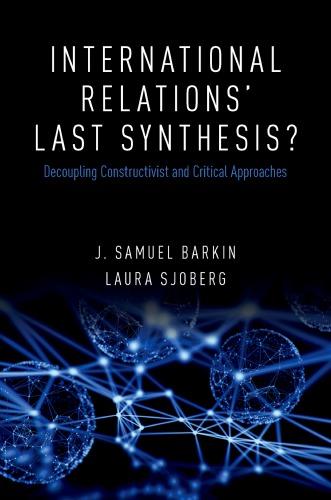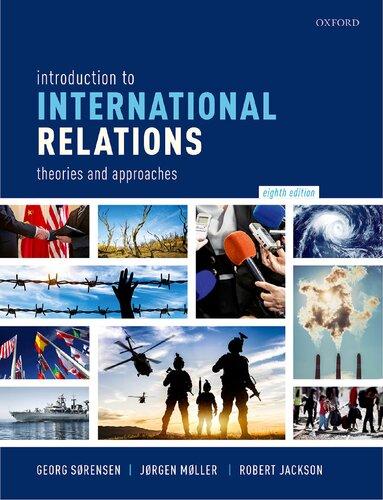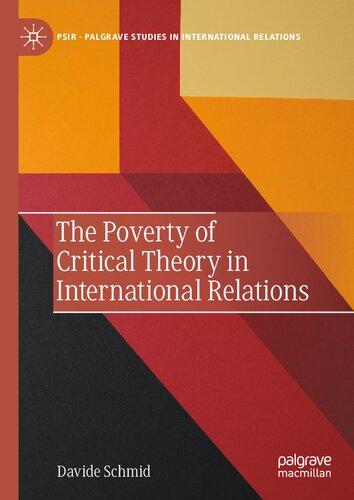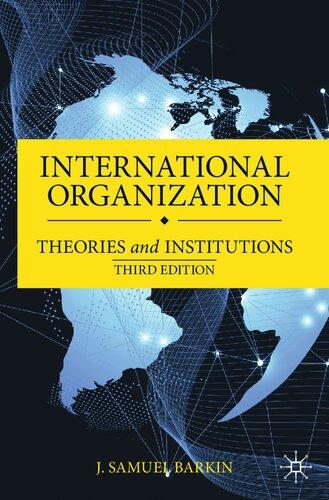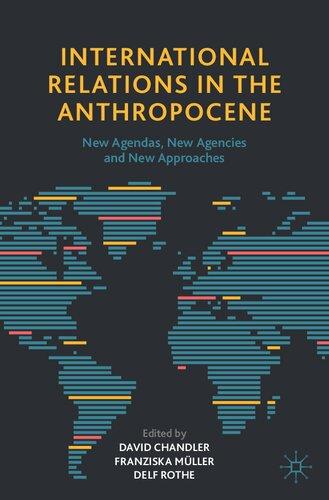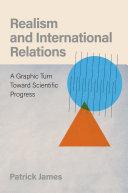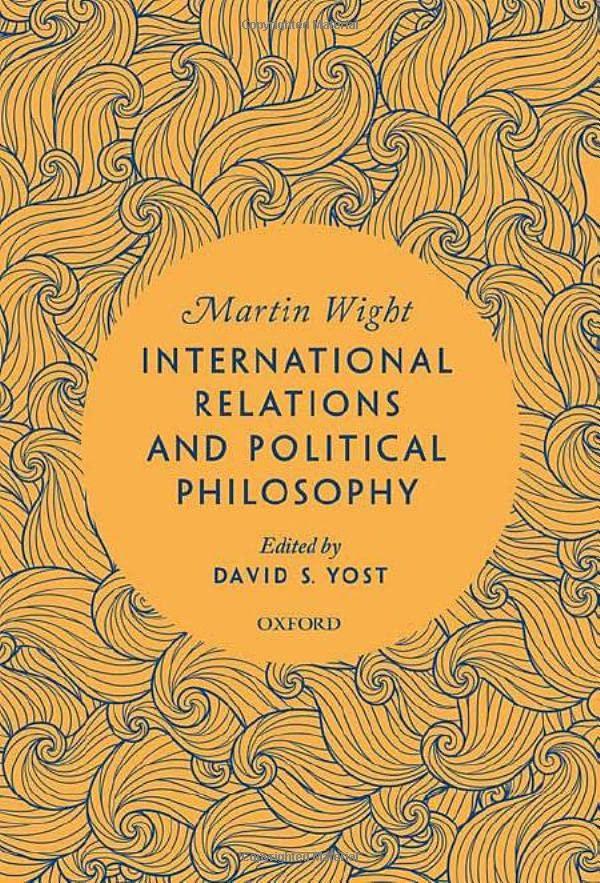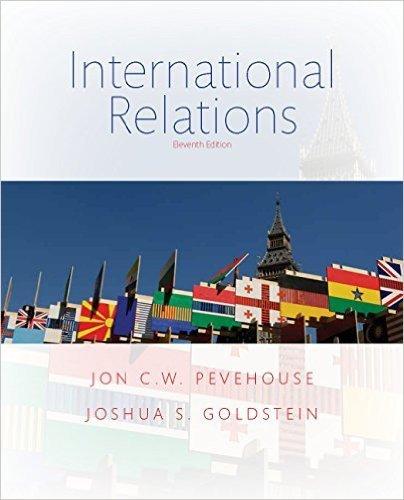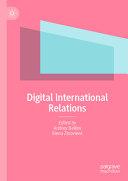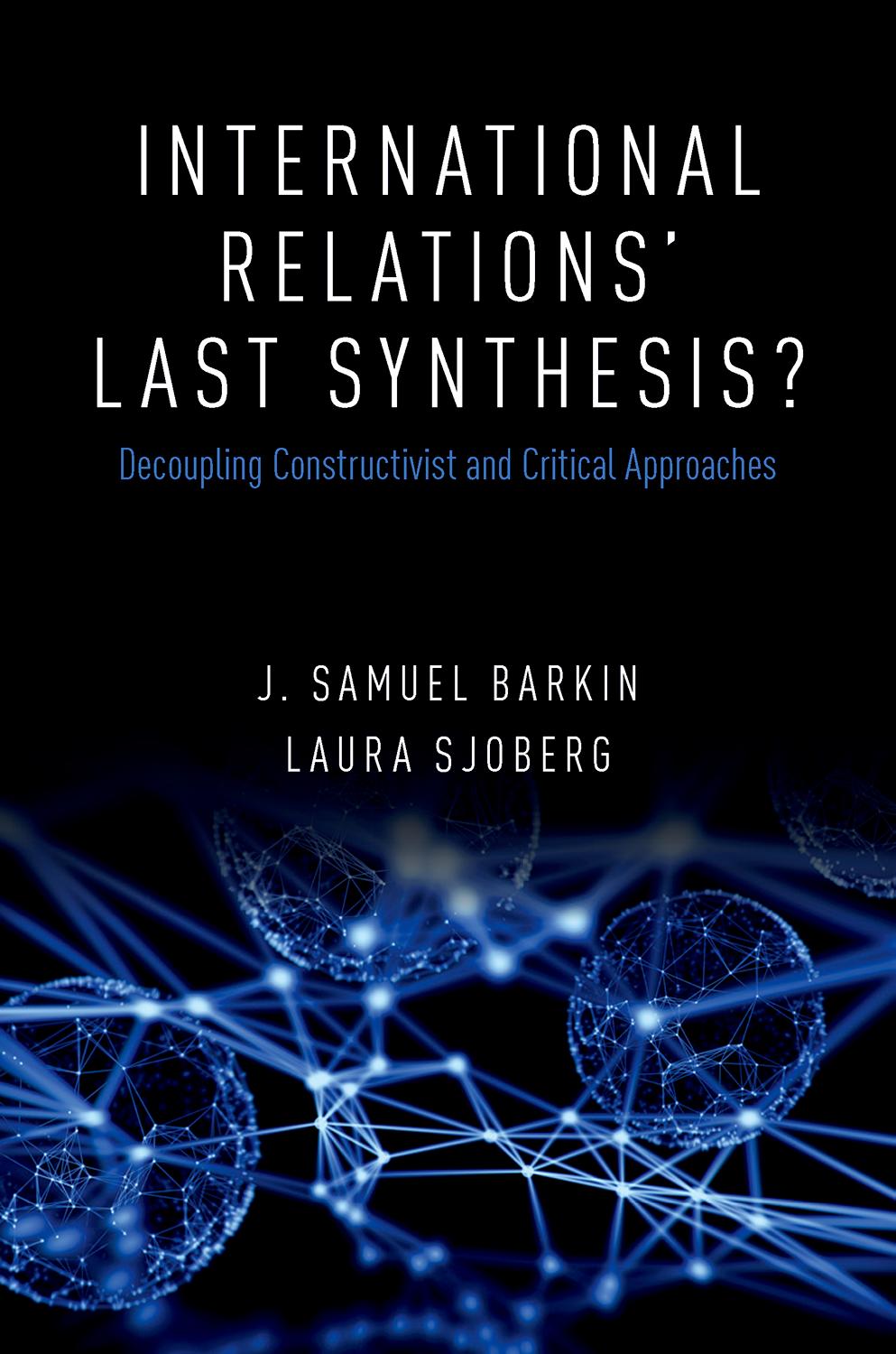International Relations’ Last Synthesis?
Decoupling Constructivist and Critical Approaches
J. Samuel Barkin and Laura Sjoberg
Oxford University Press is a department of the University of Oxford. It furthers the University’s objective of excellence in research, scholarship, and education by publishing worldwide. Oxford is a registered trade mark of Oxford University Press in the UK and certain other countries.
Published in the United States of America by Oxford University Press 198 Madison Avenue, New York, NY 10016, United States of America.
© Oxford University Press 2019
All rights reserved. No part of this publication may be reproduced, stored in a retrieval system, or transmitted, in any form or by any means, without the prior permission in writing of Oxford University Press, or as expressly permitted by law, by license, or under terms agreed with the appropriate reproduction rights organization. Inquiries concerning reproduction outside the scope of the above should be sent to the Rights Department, Oxford University Press, at the address above.
You must not circulate this work in any other form and you must impose this same condition on any acquirer.
Library of Congress Cataloging-in-Publication Data
Names: Barkin, J. Samuel, 1965- author. | Sjoberg, Laura, 1979- author.
Title: International relations’ last synthesis? : decoupling constructivist and critical approaches / J. Samuel Barkin and Laura Sjoberg.
Description: New York, NY : Oxford University Press, [2019] | Includes bibliographical references and index.
Identifiers: LCCN 2018034996 (print) | LCCN 2018050866 (ebook) | ISBN 9780190463434 (Updf) | ISBN 9780190463441 (Epub) | ISBN 9780190463427 (hardcover : alk. paper)
Subjects: LCSH: International relations—Philosophy. | Constructivism (Philosophy)
Classification: LCC JZ1305 (ebook) | LCC JZ1305 .B366 2019 (print) | DDC 327.101—dc23
LC record available at https://lccn.loc.gov/2018034996
9 8 7 6 5 4 3 2 1
Printed by Sheridan Books, Inc., United States of America
CONTENTS
Acknowledgments vii
1. Introduction 1
2. The Constructivist– Critical Theory Synthesis 19
3. Understanding and Classifying Constructivisms 43
4. Constructivism Does Not Have a Politics 63
5. Understanding and Classifying Critical Approaches 79
6. Critical Theory Is Ontologically Promiscuous and Methodologically Agnostic 99
7. A Case against the Constructivist– Critical Theory Synthesis 122
8. Thinking beyond the Constructivist– Critical Theory Synthesis 147
Notes 171 Index 217
ACKNOWLEDGMENTS
The idea for this book, or at least an idea for this book, will be a decade old at the time that the book sees print. We owe the inspiration for it to a discussion of Richard Price’s Moral Limit and Possibility in World Politics in the University of Florida International Relations Reading Group in the fall of 2009, when we both worked there. We appreciated the intellectual environment that group provided us.
We are grateful to our editor at Oxford University Press, Angela Chnapko, who has been just awesome every step of the way. Conversations over many years with many great colleagues have sharpened the ideas in this book (though inevitable mistakes remain our own). We have benefitted from conversations with Patrick Thaddeus Jackson, Beth DeSombre, Dan Nexon, Dan Levine, Nick Onuf, Alex Wendt, Aida Hozic, Leann Brown, Fred Chernoff, Pat James, Amy Eckert, Jesse Crane-Seeber, Harry Gould, Brent Steele, Jack Amoureux, Swati Srivastava, Brooke Ackerly, Matt Hoffmann, Cameron Thies, Paul Kowert, Stacy VanDeveer, David Sylvan, Ian Lustick, Annette Freyberg-Inan, Ewan Harrison, and many others over the years. Our participation in a number of different projects, including our Interpretive Quantification; Pat James, Jarrod Hayes and Mariano Bertucci’s Constructivism Reconsidered; and Thomas Risse, Tanja Borzel, and Anke Draude’s Oxford Handbook of Governance and Limited Statehood has helped to supply our vocabulary for talking about these issues. Audiences and co-panelists at the American Political Science Association, the International Studies Association, and (especially) the International Studies AssociationNortheast have listened to versions of this argument over the years and helped it develop into the form it takes in this book.
The ideas in this book come both from our personal experiences trying to navigate both the “isms” and the pushback against them in the field; they also come from thinking about how to teach IR theory to students as future practitioners and as future researchers in global politics/International
Relations (IR). We are also grateful to our undergraduate and graduate students at the University of Florida and the University of Massachusetts Boston for the teaching moments that reminded us how important clarity and specificity is not only for theory but also for how and what we teach. This project has been a mission for us, but it has also been, in its various instantiations, both a lot of fun and ridiculously frustrating, clear and confused, driven and wandering. Through it, we have relied on and been grateful for those who love us, human and animal. We hope that our human loved ones enjoy the book and that Max and Zoë resist eating our copies.
[ viii ] Acknowledgments
Introduction
In 2014, Martin Weber argued that constructivisms’ separation from critical theoretical approaches to the study of global politics was both intellectually incorrect and theoretically counterproductive.1 Weber explained that “constructivism’s rapid consolidation as a research program” has “shifted” International Relations (IR) “under constructivist influence,” bringing with it methodological and theoretical challenges.2 Weber, however, does not approve of this influence, given constructivists’ “continuing penchant for explanatory social science” and “project of distancing such consolidations” from critical theoretical approaches.3 Unhappy with what he calls “mainstream constructivism,” Weber critiques “the way in which . . . [it] engages with norms,” which he characterizes as an “essentially behavioral” account. He suggests that distinguishing constructivisms from critical theoretical approaches in IR can “have negative repercussions for any attempt at integrating concerns with the role of norms appropriately into the broader social theoretic project aimed at analyzing political orders and change.”4
Weber’s argument that constructivisms should adopt a critical theoretical perspective, or step aside completely, seems to fly in the face of disciplinary norms. After all, just a year earlier the editors of the European Journal of International Relations suggested that there has been a strong decline in macrotheoretical IR work writ large, and that the macrotheoretical interventions that do exist rarely if ever engage in passionate critique of one theoretical position from another.5 Dunne, Hansen, and Wight described the evolution of a “theoretical peace” such that IR inquiry has “settled into a period . . . with the dominant logic now that of considering the prospects for various forms of pluralism.”6 Suggesting that “all academic disciplines
undergo periods of stasis and change,” they propose that the current period of IR theorizing is one of stasis, were “much work in IR has not risen to the level of meta-level theory, neither has it generated passionate debates.”7
It may well be that Weber’s passionate critique of “mainstream constructivism” is the exception and not the norm in terms of the presence of interparadigmatic debate in the discipline, as well as in terms of the publication of purely macrotheoretical arguments.8 But we argue that it is also outside the norm of disciplinary practice in another way. Wight argues that constructivisms and critical approaches to the study of global politics are both easily distinguishable and make different wagers in terms of norms and politics.9 Wight accuses constructivisms of “avoiding normative theory,” with “a prior commitment to social- scientific objectivity,” avoiding “strong normative commitments” and “relativism.”10 Returning to the rationalist-reflectivist separation in Robert Keohane’s 1988 presidential address to the International Studies Association, Weber accuses constructivists of inhabiting the via media to the theoretical and political detriment of the field. He argues that constructivisms and critical approaches are separate and should not be— that constructivists should adopt the orientations of critical theorizing.11
We see this article as an anomaly not only because it breaks what Dunne, Hansen, and Wight call the “theoretical peace” but also because our reading of the sociological relationship between constructivisms and critical approaches to theorizing global politics in disciplinary IR suggests that Weber’s interpretation of the “problem” with the relationship between the two is both empirically and normatively incorrect. Weber reads some mainstream constructivists’ attempts to distance their work from critical theorizing as dominant in the field.12 We suggest, instead, that narratives identifying a critical aspect to constructivism and a constructivist aspect to critical theory—perhaps in the name of a theoretical peace, perhaps not— are so dominant in the field, at least in the United States, that they have reached the status of being relatively unquestioned.13 Unlike Weber, who would suggest that it is a moral imperative for constructivisms to adopt the normative orientations of critical approaches, we argue that the fusing of constructivisms and critical approaches to global politics is on balance harmful, intellectually, politically, and in terms of disciplinary sociology. Here, then, we arrive at the key controversy that this book looks to address: where do critical theory and constructivism fit into IR theory, and what is their relationship with each other? What does that relationship say about the existence (or lack) of a “theoretical peace” and the pros or cons of such a stasis? Does evaluating more closely the relationship between constructivist and critical approaches to IR provide clues about where IR
theorizing is, and where it might be going? Does such an evaluation provide any clues about Weber’s burning question of where IR theorizing should be headed? Dunne, Hansen, and Wight find a middle ground on the question of grand theory in IR: “we do not seek to align ourselves with a view that celebrates the ‘theoretical peace’ and neither do we want to return to a paradigmatic ‘war of all against all.’ ”14 Rather than “align” with either extreme, they close “with the observation that disciplinary turning points’ and ‘great debates’ are seen more clearly when the moment has passed” and suggest that history will tell us about this period in IR theorizing.15
We suggest that it is important not to wait for history on this question, and that the answers to some of the pressing questions about the state, direction, and possible future directions of IR theorizing are indeed right in front of us. We argue that the “theoretical peace,” the “end of IR,” “analytic eclecticism,” and other code words for an analytically fuzzy understanding of pluralism are, at their base, sociological rather than theoretical. They represent theoretical synthetization inspired by many forces in the field of IR, but not a clear understanding of the intellectual rationale for pluralistic approaches or synthetic understandings.16 We suggest that the “theoretical” (and methodological) peace is manufactured.
In this book, we take on one of the most prominent products of this manufactured pluralism, tolerance, and similarity: the relationship between constructivisms and critical approaches. Whether as a part of an explicit or implicit “theoretical peace” or not, we suggest that work both inside and outside of constructivist and critical approaches to global politics portrays the two as being necessarily compatible or as existing on some unidimensional spectrum of radicalness, which spectrum is variously political, ontological, or epistemological. We call this portrayal, for reasons that will become clear in the next few pages, the critical- constructivist synthesis. We argue that the synthesis has become a common, permeating feature both of characterizations of disciplinary organization, especially in the United States, and of substantive descriptions of how the theoretical approaches do, or in Weber’s case should, work. Though it has not been named as such in the past, we argue that the constructivist– critical theory synthesis has many advocates in the field and even more implicit adherents.
We also argue that the constructivist– critical theory synthesis is a bad idea— that it does not stand up to scrutiny of its substantive basis, its sociological impacts, or its politics. We contend that the sociology of the field, rather than any intellectual justification, constituted this synthesis and continues to make adherence to it professionally, if not intellectually, profitable. We suggest that this synthesis did not, and indeed could not, develop out of the content inherent to either approach—because
there is no commonality on which to build a synthesis. In addition to this synthesis not standing up to close examination, we argue that it is dangerous; it circumscribes what is considered legitimate scholarship in the discipline, and serves to exclude rather than to illuminate theory in the field. We argue that both constructivisms and critical theories should be thought of as tools for the study of global politics, rather than paradigmatic elements of IR theory. We argue that they should be thought of as different tools that can but sometimes should not be deployed for common analytical causes. We contend that the failure to separate constructivisms and critical approaches contributes to the stasis that Dunne, Hansen, and Wight identify in disciplinary IR.17
UNCOVERING THE NEW STASIS
This is why the juxtaposition of Weber’s grand theoretical critique and advocacy of a constructivist– critical theory synthesis against Dunne, Hansen, and Wight’s argument about the decline of those sorts of arguments serves as a good entry point to the discussion of the constructivist– critical theory synthesis. Dunne, Hansen, and Wight’s argument is the introduction to a special issue of the European Journal of International Relations addressing the status of IR theory, provocatively titled “The End of International Relations Theory?”18 The authors use the question of whether IR (and IR theory) is at an end in a variety of different ways across the text of the article, but we are most interested in the discussions of if, and how, grand theorizing remains a part of inquiry about global politics in disciplinary IR. Dunne, Hansen, and Wight note (and we agree) that there has been a decline in macro- theoretical clash among theorists and researchers of global politics. They introduce this decline with reference to disciplinary history: “it is clear that the intense theoretical debates that followed the publication of Kenneth Waltz’s (1979) Theory of International Politics and which led to the ‘third debate’ (Lapid, 1989), or the ‘fourth debate’ if one follows Ole Weaver in including the inter-paradigm debate (Weaver, 1996), have now subsided and that the discipline has moved into what might be described as a period of ‘theory testing’. The paradigm wars, if that is the correct term, are now over.”19 We believe that Dunne, Hansen, and Wight are right to remember times when the stakes in macro- theoretical debates in IR were different, and when the clash between theoretical approaches was sharper. Still, that clash has not been consistent throughout the history of theorizing IR—it has waxed and waned with changes in the world of global politics and changes in disciplinary sociology. We agree with Dunne,
Hansen, and Wight that there is not currently a paradigm war, or raging grand theoretical debate in the study of global politics.
But this is not the first time that IR theorizing has featured a lack of grand theoretical debate, and we argue that a broader look at the inherited narratives of disciplinary IR is revealing about the current state of the field. Particularly, one of the times when the “paradigm wars” were in full swing was the 1980s, where there was a core theoretical debate between neorealism and neoliberalism. The debate between the two in Neorealism and Its Critics, 20 Waltz’s Theory of International Politics, 21 and Keohane’s After Hegemony, 22 were once characterized as a major clash in the study of global politics, bringing up key differences in orientation—particularly the debate about the possibility of cooperation between states in an anarchic international arena.23 At the same time, the neorealist and neoliberal approaches to understanding how global politics works shares many common ontological and methodological understandings. These commonalities increased throughout the course of theoretical arguments across the paradigms, as neoliberals subscribed to neorealists’ postulations about the anarchical nature of the international system and states’ propensities to seek relative gains over absolute gains.24
The increasing agreement between these approaches and the narrowing of the substance on which they clashed led Ole Waever to suggest, in the 1990s, that the field was no longer in a place of grand theoretical clash but was instead in a place that Dunne, Hansen, and Wight might call stasis, where the major theoretical approaches came to agree more than they disagreed, and formed what Waever called the neo-neo synthesis.25
Inside the synthesis were neorealism and neoliberalism, which agree substantially on some of their major tenets regarding how global politics works and which appeared at the time to have a chokehold on grand theoretical debate about global politics, restricting the debate to their own minor differences. An outside of the synthesis quickly developed, unwilling to accept the narrowness of the neo-neo synthesis or its tendencies to set the terms of scholarly debate. Various forms of radical IR, with little else in common, stood outside the synthesis and argued against it. The forms of critique ranged from the ontological to the methodological to the political, and these critiques of the neo-neo synthesis were often not mutually compatible. This category of paradigmatic other was often generically labeled “Marxist” during the Cold War, but this label was slowly replaced by “constructivism” or “critical approaches” after the demise of the Soviet Union. The critical- constructivist synthesis, we argue, is the direct descendant of this category of radical paradigmatic other.
The late 1980s, then, is told as a time when stasis was replaced by debate— the neo-neo synthesis giving way to what IR theorists have alternatively called the “third” or “fourth” debate, between the neo-neo synthesis and its (epistemological, ontological, or methodological) constitutive other(s). The existence of this “debate” (and the very telling of the history of disciplinary IR through stories of two- sided debates) at once defines the terms of the clash that reinvigorated grand theorizing and groups the “other side.”
Many of IR’s substantive wagers are up for debate in this framing of the discipline: grand theoretic questions, like what ontology and what epistemology are best for the study of global politics, are up for discussion in a way they were not during the neo-neo synthesis.
At the same time, the substantive wager that is (under the radar) not up for debate is the need to explain the theoretical landscape of IR in terms of coherent, dichotomous clash. The end-of-IR- theory discussion looks back to the 1980s as a time of disciplinary coherence, when there was a generally accepted disciplinary core that provided the touchstone for discussions of grand theory, whether one was positively inclined toward that core or not. This discussion then looks at the following debate as a clash on which there were two possible positions: for the neo-neo synthesis and against it. Positions for the synthesis were within it; positions against the neo-neo synthesis came to be synthesized themselves in oversimple, comforting stories of a discipline that was coherent even in its disagreements.
Various entrants into these discussions have argued that IR theorizing is declining, because that core has lost its centrality to the discipline, or that it continues to go strong, because other cores are replacing it. They argue that decline is bad and should be reversed, or that it is good and the resulting theoretical eclecticism should be celebrated.26 It is against this background, of a paradigmatic view of theory and a nostalgia for a more coherent discipline, that critical theories and constructivisms are pressured into a synthesis. If IR is a discipline of grand theoretical debates, it follows that IR scholars will manufacture grand paradigmatic syntheses about which to debate—narratives about disciplinary coherence demand it, and those are the only part of disciplinary IR that have been inflexible across debates, periods of change, and periods of stasis.27
It was the inflexible search for coherence, we argue, that constituted the neo-neo synthesis itself, that inspires debates like the “end of IR” discussion,28 and that encourages scholars to espouse an analytic eclecticism that is substantively problematic.29 We suggest that the need for coherence combined with the disciplinary power politics of the mainstream have created, paired with (and simultaneously pared against) the neo(realist)neo(liberal) synthesis in IR, a new theory synthesis among the critics of the
neo-neo synthesis. We identify this as the constructivist– critical theory synthesis, for ease of labeling, though we see it involving many different sorts of constructivisms and many varieties of critical theory. Across this text we will refer to it alternatively as the constructivist– critical theory synthesis, as an imaginary disciplinary “left,” and as what we argue should be the discipline’s last synthesis.
INTERNATIONAL RELATIONS’ LAST SYNTHESIS
In this book, our identification and recognition of the constructivist–critical theory synthesis is not simply an exercise in field mapping and theory labeling. Instead, we make a series of arguments that the constructivist– critical theory synthesis has become inherited wisdom in a deeply problematic way that obscures theoretical richness and impedes clarity in research about global politics. To make that argument, we start by thinking about Ole Waever’s critique of the neo-neo synthesis in the early 1990s.
Waever’s critique of the neo-neo synthesis was multifaceted. Both in the chapter where he criticized the synthesis and elsewhere, Waever made it clear that he fell on neither “side” of the dichotomous debate: that his theoretical orientation was outside neorealism and neoliberalism.30 But he suggested that his falling outside boundaries of the neo-neo synthesis was a problem that was orthogonal to the problem of the synthesis itself, which created a chokehold not only on its constitutive others but also on the theories within the synthesis. Waever argued that the disciplinary IR of the 1980s had come to be dominated not just by neorealism and neoliberalism, but by a combination of the two that made the synthesis between them less than the sum of its parts.31 He pointed out that the tightening of disciplinary power around these two approaches had the effect not only of excluding approaches that fell outside them but also of decreasing the intellectual viability of each individual approach.32 He explained that both neorealism and neoliberalism, in the process of entering the political synthesis for disciplinary power, “underwent a self-limiting redefinition towards an anti-metaphysical theoretical minimalism.”33 In this redefinition, each “side” of what had once been an opposition stripped out of its theoretical positions the elements that would be incommensurable, in order to make feasible a synthesis. The result was that in the neo-neo synthesis, “realism is no longer an ethico-philosophical position” and liberalism “moved away from being a general interpretation of the nature of international relations . . . and concentrated instead on asking a few precise questions.”34
With Waever, we think that the theories in the neo-neo synthesis were less than the sum of their parts because of the sociological and political choice to engage in exercises of synthesization.35 The understanding that these theories should agree narrows potential fields of inquiry significantly and destroys some of the richness of each individual theoretical approach. Instead, we see both normative and intellectual value in disagreement and distinction—where (with Hayward Alker and Tom Biersteker) “it is the sharing, the interpretation, and the principled opposition of these often antagonistic approaches . . . that truly constitute the global inter-discipline of International Relations.”36 Alker argues for a “controversy-based path” to the production of scholarship.37 Eschewing the sensed obligation that theories should agree allows for the dropping of the pretense that they do agree.
If the neo-neo synthesis was destructive to grand theorizing, it was because the generally agreed-on framework created a sense of comfort about (and discouraged discussion of) the “big questions” of what is happening in global politics. If that destruction of grand theory ended—if IR got over the “wall” of neo-neo synthesis—it was because some theorists (particularly constructivists and critical theorists, although not necessarily for reasons of common epistemological assumptions) started paying attention to those “big questions” again, and critiquing inherited assumptions that those questions had been solved. In other words, the synthesis itself narrowed and silenced inquiry about big theoretical questions as it looked for disciplinary security or hegemony, and the process of deconstructing that synthesis from the outside both opened up previously closed areas of inquiry and allowed for the development of stronger and more nuanced approaches, even to the approaches that had once been synthesized.38
If the neo-neo synthesis no longer has a chokehold on either adherents to realist/liberal approaches or the discipline as a whole, we argue that the problem of synthesis itself has not gone away. Instead, a new, less visible but equally influential synthesis has been positioned as an imaginary disciplinary “left” between constructivist and critical approaches. As we discussed earlier, constructivist and critical approaches, originally the constitutive other to the neo-neo synthesis, appear, in some sense, to have “won” the positivist/postpositivist debate in IR, as many scholars self-identify as constructivist,39 and many scholars who do not self-identify as constructivist or critical acknowledge the importance of including those approaches on the map of the ways the discipline works.40
We argue, however, that this “victory” is partial and comes at the high cost of the institutionalization of a constructivist– critical theory synthesis. Particularly, we see that the constructivist– critical theory synthesis carries
with it many of the same costs as did the stasis that preceded it thirty years ago. Not only is the combination of the two divergent approaches intellectually problematic, it has negative effects on disciplinary sociology, disciplinary politics, and ultimately the project of theorizing itself. Throughout this text, we focus on three major costs of what we argue should become IR’s last theoretical synthesis.
The first major cost is that the constructivist– critical theory synthesis misunderstands, mistakes, or perverts both constructivism and critical theory. In other words, the intellectual wagers of the constructivist– critical theory synthesis are incorrect. Much of this book is devoted to making the case that the logic of the synthesis, despite its popularity, is false; there is no necessary paradigmatic commonality across contructivisms and critical approaches. We look to disentangle constructivisms and critical theorizing, paying attention not only to their (potential) commonalities but also to each theory’s ontologies, epistemologies, and politics and the ways they differ substantively. In so doing, we hope to clear up arguments about constructivist politics and critical methodology that we see as muddling twenty- first century IR theory. A discourse of synthesis, of a paradigmatic or radical theoretical other, leads scholars to both misunderstand and underestimate what both approaches can do.
We argue, moreover, that a default or intentional synthesis between constructivisms and critical approaches has more costs than the problems with its intellectual wagers. The second major cost of the constructivist–critical theory synthesis is that it is exclusionary. Scholarship outside the mainstream of the discipline that does not fit into the prescribed boundaries of the synthesis, that does not fit into the terms of the supposedly radical other, can find no place on the maps of IR scholarship. If the constructivist– critical theory synthesis is the acceptable/accepted “other” to the neo-neo synthesis, work outside either necessarily falls outside the discipline as told by the dominant narrative, and the telling of the discipline often constitutes the availability of space and tolerance for particular approaches. Synthetic debates can thereby easily become about boundary- setting, about what scholarship to exclude, rather than about what individual exercises in IR scholarship can teach us about global politics. In other words, the constructivist– critical theory synthesis tells out of possibility other approaches that might defy easy categorization or oversimplifies them into categories where they may not fit; deconstructing the synthesis would allow attention to the nuances of a wider variety of approaches.
The third cost of the constructivist– critical theory synthesis is that it reinforces a disciplinary language of paradigms, of thinking about
constructivism or critical theory (or realism or liberalism for that matter) as comprehensive sets of ontological, epistemological, methodological, and political commitments that can and indeed must be taken together as a set. Returning briefly to the “end of IR,” debate, we argue against both a “theoretical peace” and “paradigm wars,” but not because we are going to look either to history or another grand narrative. Instead, we suggest that deconstructing this false synthesis (and others like it) allows us to see what theories really can do, what intellectual wagers they make, and what their possibilities and limits are in terms of the analysis of global politics. The mistake that both the “paradigm wars” and the “theoretical peace” make is the one insistence we see as constant across tellings of the disciplinary history of IR: the search for the combination of coherence and totality. What Dunne, Hansen, and Wight see as an “uneasy truce” in favor of pluralism, we see as a way of framing disagreement and necessary dissonance coherently, thus eliding the messiness of that dissonance.41 The new “pluralist” coherent narrative downplays the importance of theoretical difference42 or even theory itself.43 When theoretical approaches are invoked, then, they are invoked as a background condition for a particular substantive (or, in Weber’s case, normative) argument.44 This common invocation of theory, along with the lingering understanding of theoretical approaches to global politics as coherent paradigms, suggests that each theoretical approach to global politics both has and shares a full set of tenets about how the world works (ontology), how to know how the world works (epistemology), procedures for discovering how the world works (methodology), tools for uncovering that information (methods), and normative orientations toward that information (politics). Paradigms are assumed to be both internally coherent and comprehensive—an assumption that has been taken for granted along all of these axes, even in its contestation, since the importation of Imre Lakatos’s philosophy of science into inquiry in disciplinary IR.45
This assertion is, in our view, an overestimation of the potential of paradigms, which leads to totalizing overstatements of their possible contributions. The words “neorealism” and “neoliberalism” in the neoneo synthesis were used as shorthand stand-ins to describe worldviews understood to be both comprehensive and fully coherent. We suggest that the terms “constructivism” and “critical theory,” along with their synthesis, have come to serve a similar function, where each refers to an undefined but assumed full set of tenets about global politics, from ontology to methods. But neither critical theory nor constructivism (like realism or liberalism) provides the intellectual basis for such a full set of commitments. Constructivism, as we argue in chapters 3 and 4, provides
a basis for ontological and methodological but not epistemological or political commitments. Critical theory, as we argue in chapters 5 and 6, provides a basis for political but not ontological, epistemological, or methodological commitments. Furthermore, broad ranges of varieties of both constructivisms and critical theories exist, and trying to fit them into paradigms, let alone into a synthesis, does violence to this variety. The “paradigm wars,” then, were not only problematic for their dichotomous understandings of the factors that might possibly account for what happens in global politics. They were problematic as well for their totalizing inclusion of approaches, not only in the synthesis between paradigms but in the paradigm itself, insomuch as the idea of a coherent paradigm in disciplinary IR overpromises intellectual wagers, and therefore necessarily underdelivers imagined coherence, dichotomous possibilities, and manufactured commonalities.
REJECTING THE CURRENT STASIS OF IR’S THEORY
Instead of wondering whether IR theory is over, or whether the new “trend” that Dunne, Hansen, and Wight call “theory- testing” has taken irrevocable hold,46 we suggest that IR’s current stasis strongly resembles the neo-neo synthesis. We argue that IR theory is currently stuck in a rut much like the neo-neo synthesis of the 1980s, built from a similarly limiting alliance of the neo-neo synthesis’ opponents. We argue that the constructivist–critical theory synthesis, like the “wall” of the neo-neo synthesis, is (intentionally or not) a political agreement that distracts attention from the “big questions” about global politics that theorizing in IR could and should address. The underspecification and overreached application of genericized constructivisms and critical theorizing in IR make efforts to address these kinds of questions more fraught and less effective. We contend that these implications make it necessary to critically reevaluate figurations of constructivist/critical IR to correct for this failure of clarity.
This book project is at once interested in assessing the theoretical map of the discipline of IR and in using insights about that theoretical map to further both conceptual and empirical understandings of how global politics works. In the wake of the rising popularity of arguments about the “end of IR theory,”47 this book sees a world in which IR theorizing is alive and well and is a key part of both disciplinary analysis and disciplinary self-identification.48 While we see the continued importance of theory even in scholars’ disavowal of it, we recognize, with those who declare theory’s death in the discipline, that something has changed in the structure
and function of theorizing among scholars interested in global politics. That change, however, is not a decline in theoretically inclined work. It is, instead, the combination of a halted argument among positivists and postpositivists with a constructivist– critical theory synthesis among the critics of the neo-neo synthesis.
This constructivist– critical theory synthesis is often characterized by a common defense of theorizing beyond the neo-neo synthesis, a common defense of the utilization of nontraditional methods to analyze global politics, and a common commitment to a politics of emancipation and social justice. We argue that this common defense, and many others that advocate for the combination of constructivist and critical approaches to the study of global politics, result in a lack of careful specification of the precise capabilities and limitations of the theories that contribute to this constructivist– critical theory synthesis. In other words, we know less about constructivisms and critical approaches generally and particular approaches that might fall within those broad categories specifically because of their grouping in the constructivist– critical theory synthesis.
Particularly, we contend that the aforementioned commonalities are contrived and that they require misreading of the base assumptions of both constructivisms and critical theory approaches in IR. Related to these claims, in this book we have three interrelated goals. First, we look to distinguish constructivisms and critical approaches, paying attention to their differences. In so doing, we hope to clear up arguments about constructivist politics and critical methodology that we see as muddling twenty- first century IR theory. Second, we look to explore the conceptual and empirical contributions that various constructivist and critical research programs could make to the study of global politics. In so doing, we hope to make modest but clear- cut proposals for the research agenda of theoretical IR outside the neo-neo synthesis that dominated late twentieth- century IR. Finally, we are interested in using that analysis to make an argument about both the state and the future of IR theory more generally—an endeavor that we suggest is lost, entangled, and underspecified, but far from over.
This argument builds on Alker’s suggestion of a “controversy-based path” in the production of scholarship, and proposes an understanding of constructivisms and critical theories that is built on neither the synthetic impulse of the grand theory narratives of the 1980s nor the centripetal forces of a simple eclecticism or an unreflective pluralism. We call for a view of IR theory in which various approaches are seen as sets of tools for research that can be used in a variety of different and creative ways. This view is different from the synthetic impulse, in that tools can be productively
combined in a variety of ways; it is distinct from a paradigmatic view, in which scholars argue over which tools are the correct ones to use, rather than over how they might all be used productively. But the element of argument, of controversy, remains and distinguishes this view from calls for eclecticism or middle-level theory. For the sets of tools themselves are in constant need of development and renewal; IR theory continues to have a life at this level of theory development. Furthermore, not all combinations of tools work equally well. Relieved of the need to synthesize, IR theory can have more useful, and more nuanced, debates about how, and the conditions under which, various tools of ontology, epistemology, methodology, and politics combine effectively.
TOOLS, AFFORDANCES, AND SEEING IR THEORY AGAIN
In much of the IR theory literature, we have indentified what we call a “matching game,”49 in which certain approaches are either implicitly assumed or (less often but still frequently) explicitly identified as having natural affinity or commonality. Certain methods are generally matched with particular epistemologies and not others. If you want to study whether territorial settlement makes states less likely to make wars, you do so with positivist epistemology and statistical methods.50 If you want to study what significations about gender are contained in United Nations Security Council resolutions, you do so using poststructuralist epistemologies and discourse-analytic methods.51 We are not arguing that these pairings make no sense, or make bad research. In fact, both projects referenced are quite good on their own terms.
We are, instead, arguing that there is an intellectual messiness in this kind of pairing as a shortcut to understanding what tools are useful for what purposes, and which theories have affinities with what methods, epistemologies, and so on. The pairings are not necessarily wrong in practice, but they are unnecessarily limiting and intellectually counterproductive. The associations in IR between different theoretical perspectives and methodological proclivities are more social and disciplinary-historical than they are based on the actual appropriateness of the pairings. At best, many of these pairings rely on a narrow interpretation of the utility of certain methods or an overgeneralization of the commonalities of certain theories or paradigms. At worst, they are the end result of projects of theoretical synthesis, in which method and epistemology are associated with theory for reasons of disciplinary politics rather than methodological logic. We do not think of paradigms as coherent wholes, nor do we read methods’
possibilities in traditional ways. In this project, we attempt to avoid these inherited associations and, where we can, show the problems with them.
We want to reclassify how IR thinks of theoretical approaches, theoretical tools, their possibilities, and their potential. Borrowing from the terminology of design theory,52 we think of theories and methods in IR as having affordances. “Affordance” is “a term used to describe the potential uses or actions latent in materials or designs.”53 As Caroline Levine explains, some affordances are properties of the material: “glass affords transparency and brittleness. Steel affords strength, smoothness, hardness, and durability.”54 These affordances are observable clues in the environment about potential uses.55 Other affordances are themselves potential uses—“a fork affords stabbing and scooping. A door knob affords . . . turning, pushing, and pulling.”56 Affordances can, then, be both of property and function. Affordances are also not limited to intended uses—“we may hang signs or clothes on a doorknob, for example, or use a fork to pry open a lid.”57 In other words, affordances are the possibilities for what can be done with something, its possible deployments, and its various capabilities, rather than just its intended uses. Note that something can be (unsuccessfully) used beyond its affordance (e.g., walking on the floor in an attic) or can have affordances beyond its intended uses (e.g., climbing on chairs to change light bulbs). While affordances are latent properties of a thing, they serve the function of making possible (and limiting the possibilities of) the deployment or use of that thing.
For the purposes of thinking about IR theory, then, affordances allow us to ask about what theory is capable of doing— the “particular constraints and possibilities that different forms afford, and the fact that those patterns and arrangements carry their affordances with them.”58 In other words, rather than asking what people say or assume theoretical tools can do, we are interested in “what potentialities lie latent—though not always obvious,” as well as the latent limitations that theorists can ignore when interested in a particular end.59 In design theory, the term “affordance” crosses back and forth between materiality and design, with an interest in both patterns and arrangements and their functionality.60 For our purposes, we are interested both in the theoretical foundations of particular approaches and tools for thinking about global politics and the utilization of those tools in practice— theoretical affordances, methodological affordances, and the conflation of the two toward certain political ends.
We think of IR tools as having affordances because it helps us understand that approaches with commonalities can also contain contradictions: they have the potential to work in tandem and the potential to stand in full opposition. Following some of the affordances of certain theories or tools
is done to the neglect of other affordances. This approach also helps us to suggest that just because many people use a particular approach one way does not mean it must be that way. In other words, if most theorists of an approach use its tools to do moral good, that does not mean that the approach is necessarily morally good. It instead means that most theorists exploit the morally good affordances of a theoretical approach, neglecting its morally undesirable affordances.
In these terms, we discuss constructivisms and critical theoretical approaches as theoretical groupings with some common and some contradictory affordances internally and no necessary direction in common. Note that we speak in the plural here, of constructivisms and critical theories rather than constructivism and critical theory. We argue that constructivisms have in common an ontological assumption that politics is socially constructed, and a set of methodologies for studying those constructions. At the same time, constructivisms do not agree among themselves on how politics is socially constructed, on how the social should be understood or studied, or on the politics with which a theorist ought approach the study of global politics (if the theorist should acknowledge having a politics at all). Similarly, critical theories have in common an understanding that theorizing is itself a political act, one that cannot objectively describe the world. But critical theories do not agree among themselves about what the relationship between theorizing and politics should be, on ontology, or on methodology.
In this sense, neither constructivism nor critical theory taken as a general approach is a tool. They are families of tools designed for an overlapping set of tasks, some of which can work well together, others not. Therefore, as general approaches they do not have affordances. Rather, affordances are to be found at the level of individual constructivisms and individual critical approaches. These affordances, in turn, can vary widely, despite family resemblances within the respective approaches, and can vary even more widely across the approaches.
Understanding theoretical approaches as sets of affordances is what we argue is missing from the “end of IR theory” debate and other recent appraisals of the state of paradigmatic knowledge in global politics research programs. Rather than speaking of theory as something all-encompassing, or something that is over or dead, we argue that it is important to think of theory’s affordances— what theory (as a whole, or individual theories) can do, and what it is unreasonable to expect a theory or theory generally to do. Absent the hubris that would have proponents of one or another paradigmatic approach claiming to have found the one and only way to understand global politics, neither paradigmatic syntheses nor paradigmatic debates
are productive of such an understanding. Conceptualizing theory in terms of affordances allows for a productive conversation about how different theories can help with such an understanding in specific contexts, rather than disagreeing about who has seen the light and who has not.
ORGANIZATION OF THE BOOK
The core argument we make in this book is that many scholars, intentionally or unintentionally, have entangled constructivisms and critical theories in problematic ways—by assigning a critical- theoretical politics to constructivism,61 by assuming the appropriateness of constructivist ontology and methodology for critical theorizing,62 or by grouping the two for reasons of disciplinary politics and/or posturing.63 Following from this is the argument that these connections have, largely, been made without adequate reflection, in contradiction to the base assumptions of each theoretical perspective, and to the detriment of both knowledge about global politics and theoretical rigor in disciplinary IR. The conclusion we draw from these arguments is that critical theory and constructivism are more productively thought of as sets of theoretical ideas that share assumptions about, respectively, politics and ontology, and that this is best effectuated by understanding them in terms of affordances, rather than in terms of paradigms and syntheses.
To make that argument, the book’s substantive discussion begins in chapter 2 by demonstrating the existence of, and warrants behind, both implicit and explicit constructivist/critical theory syntheses. This chapter sets the synthesis in the context of the broader “science wars” literature to be found throughout the social sciences, and traces its disciplinary history within IR. The chapter then looks at some of the explicit specifications and justifications of the synthesis. The remaining chapters then deconstruct, and critique, the grounds on which the synthesis is built.
The first step in this deconstruction and critique is identifying what we mean by constructivism and critical theory, what the essential elements of each approach are. We do this sequentially, first for constructivism and then for critical theory. Chapter 3 begins by identifying the theoretical origins of, and theoretical assumptions underlying, a number of different varieties of IR constructivisms. The chapter suggests that a number of ontological commonalities and methodological demands exist among the many constructivisms in IR that help make talking about IR constructivisms as a theoretical grouping useful. Many constructivisms
have in common ontological assumptions about the social nature of politics, and methodologies for studying the social construction of politics.
At the same time, as we argue in chapter 4, among the things that constructivisms do not have in common are either a political theory or a politics. We demonstrate that constructivism as political theory rather than social theory is a betrayal of constructivisms’ intellectual legacy and, beyond that, is normatively problematic. While contructivisms, individually and collectively, have political content, we distinguish this from the idea that there is a constructivist ethics,64 or a constructivist politics.65 Instead, rather than one political affordance, constructivisms have many.
Chapters 5 and 6 make mirror-image arguments about critical theory. Chapter 5 discusses the wide variety of theories that can be talked about as critical theories in global politics, from the explicitly emancipatory agenda of Welsh- school critical security studies66 to many strands of feminist theorizing,67 and to poststructuralist and postmodernist deconstructions of IR theorizing.68 The chapter then makes the argument that what critical theoretical approaches to global politics have in common is that they are explicitly political. Among the things they do not have in common, chapter 6 contends, is an ontology, an agreement on what politics matters, what makes that politics work, or how it is structured. Furthermore, despite tendencies to read critical theory writ large differently, especially in light of attempts to build a constructivist– critical theory synthesis, critical theory in IR is methodologically agnostic.
In other words, the substantive “links” used to build a constructivist–critical theory synthesis require misreading both constructivisms and critical theorizing. While there can certainly be marriages of particular constructivisms with particular critical theories, there are simply no grounds for a general or generic synthesis. We argue in chapter 7 that a constructivist– critical theory synthesis is intellectually bankrupt, normatively problematic, politically ineffective, and just plain wrong. We revisit the various justifications of a synthesis presented in chapter 2 and show them to be not only logically flawed but also actively destructive to IR theorizing. Chapter 7, then, is about what critical theory and constructivism do not have to offer each other, despite various affordances of both approaches.
Chapter 8 returns to the constructivist– critical theory synthesis to argue that what is at stake is not that constructivisms and critical theories have no common ground but that the overstatement of their common ground that has become routine among IR scholars is counterproductive to the discovery and utilization of their potential dialogues. To that end, we suggest that constructivism is not necessarily and need not be critical; and
that critical theory is not necessarily and need not be constructivist; but that there is no reason that constructivism as social theory cannot be used as a methodology for critical theory as political theory. Still, we contend that the combination of constructivist and critical theorizing in disciplinary IR and for the study of global politics will always and necessarily be an uneasy one—and that scholars using the two in conjunction should be cognizant of, rather than gloss over, the tensions between them as approaches and the different tools they have to offer.
Along these lines, the conclusion argues for a modest, reflective, specified return to (constructivist and critical) IR theorizing, which has the potential to revive IR theorizing by rejecting its oversimple syntheses and overpromising paradigms. To this end, we return to the language of affordances, and to the discussions about the end of IR theory. We argue that both Martin Weber’s urge for a synthesis between constructivisms and critical theorizing and the now-popular declaration of an end to grand theorizing are fundamentally misguided. Instead, we conclude by showing how conceptualizing the potential relationships between individual critical theories and individual constructivisms in terms of affordances highlights their potential mutual utility without generating a discourse of synthesis or obscuring many points of divergence. This kind of approach, in which different theoretical approaches are in conversation but not in synthesis, is a way forward in IR theory, around its current stasis, and— we hope—out of the pattern of harmful syntheses.
